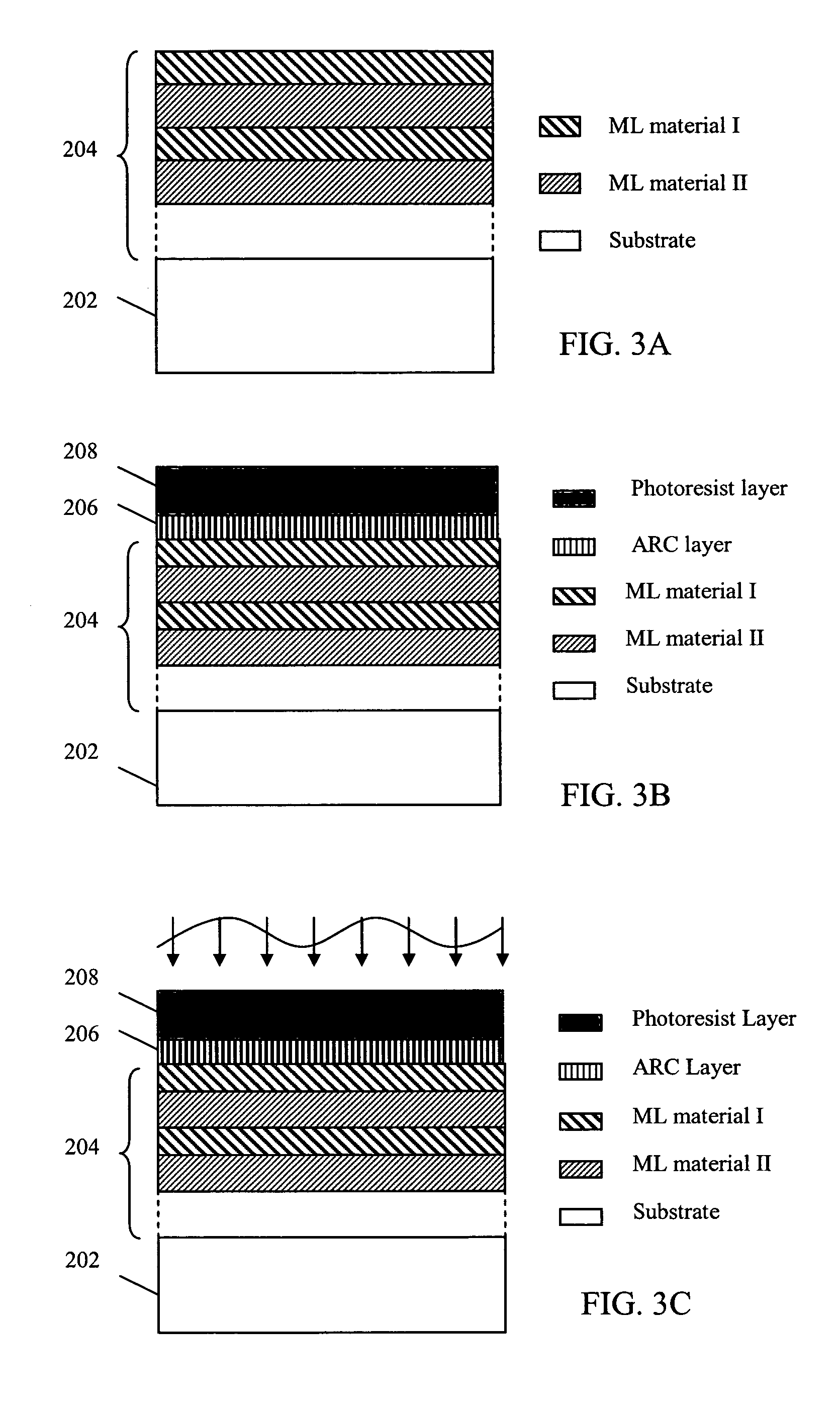Method for making large scale multilayer dielectric diffraction gratings on thick substrates using reactive ion etching
a technology of reactive ion etching and dielectric diffraction grating, which is applied in the direction of optical resonator shape and construction, instrumentation, etc., can solve the problems of inability to meet the cpa requirements, the limiting factor of the power achievable with the diffraction grating system, and the prior art design and fabrication method of advanced gratings using non-metallic materials have inherently higher laser damage thresholds than prior metallic grating
- Summary
- Abstract
- Description
- Claims
- Application Information
AI Technical Summary
Benefits of technology
Problems solved by technology
Method used
Image
Examples
Embodiment Construction
[0023]The following description is not to be taken in a limiting sense, but is made merely for the purpose of describing the general principles of exemplary and preferred embodiments.
[0024]Referring first to FIG. 2, a diagram is shown of a large multilayer diffraction grating formed with a thick substrate in accordance with one embodiment of the invention. The multilayer diffraction grating 200 includes a substrate 202 having a multilayer dielectric structure 204 formed thereon. The multilayer dielectric structure 204 includes several layers of dielectric material, for example, having alternating indexes of refraction and is also referred to as a dielectric stack. For example, illustrated are multilayer (ML) material I and multilayer (ML) material II. It is understood that the multilayer structure 204 may have any number of desired layers (as illustrated by dashed lines extending from the dielectric structure 204 to the substrate 202). Furthermore, the top layer / s of the multilayer ...
PUM
 Login to View More
Login to View More Abstract
Description
Claims
Application Information
 Login to View More
Login to View More - R&D
- Intellectual Property
- Life Sciences
- Materials
- Tech Scout
- Unparalleled Data Quality
- Higher Quality Content
- 60% Fewer Hallucinations
Browse by: Latest US Patents, China's latest patents, Technical Efficacy Thesaurus, Application Domain, Technology Topic, Popular Technical Reports.
© 2025 PatSnap. All rights reserved.Legal|Privacy policy|Modern Slavery Act Transparency Statement|Sitemap|About US| Contact US: help@patsnap.com



